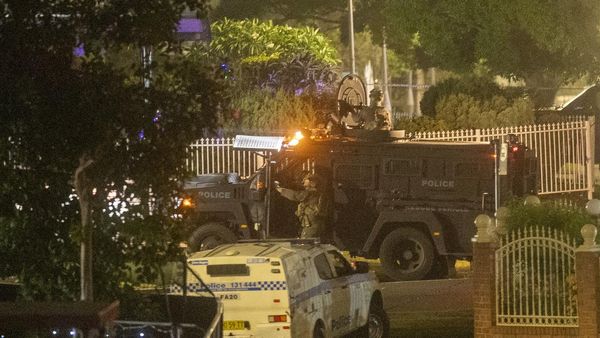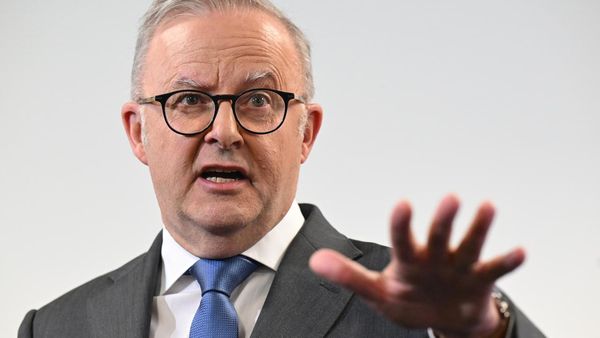
The photographer Larry Fink, who has died aged 82 from complications of kidney disease and Alzheimer’s disease, spent his life capturing the disparity and similarity between the US’s haves and have-nots. Throughout a career that spanned six decades, his images of New York socialites, Hollywood’s elite, Andy Warhol and Studio 54 clubbers, boxers, loggers and farmers provided social commentary imbued with humanism.
His parents were leftwing intellectuals and radicals who railed against the capitalist system while living the life of bon vivants, and this inherited dichotomy infused their son’s work.
When teaching at Parsons School of Design in New York in the late 1960s, one of Fink’s students, an “uptown girl”, introduced him to the debutante balls and ostentatious society parties of Manhattan. He inveigled his way in and shot in black and white, holding his flash away from the camera, bouncing light at odd angles, creating out of kilter, deep shadows.

This technique caused his subjects to stand out against the velvety blackness yet look lost, isolated and alienated. Fink strove to reveal the humanity behind the masks. He wanted to “find the dignity of man[kind] and feel the soul of the individual within”.
In 1973, Fink and his then wife, the artist Joan Snyder (whom he had married in 1968), bought a 10-acre farm in Martins Creek in rural Pennsylvania. One day he went out to buy a lawnmower from a shop run by a local family, the Sabatines. They hit it off and Fink began to photograph the family’s rituals: their birthdays, baptisms and the chaotic warmth of their hardscrabble lives.
The Sabatines were the polar opposite of New York’s upper crust, but each exhibited the same joy, desire and melancholia. It was Fink’s photographs of these complementary juxtapositions that formed the exhibition Social Graces at the Museum of Modern Art in New York in 1979, to great acclaim. A book of the same title was published in 1984, one of 13 monographs published during his life.
Each year, from 2000 to 2009, Fink brought his idiosyncratically sensual vision to Vanity Fair’s Oscar party. This time invited, he would appear from nowhere, shoot, and melt into the shadows, never asking permission. He captured actors off-guard, but he was not there purely for celebrity. He was as interested in the plus-ones and the waiting staff, and the collision of the two worlds.
Despite his success – he received numerous honours, including two Guggenheim fellowships and his work has been exhibited extensively worldwide – as a young man it did not occur to the self-styled “Marxist of Long Island” that photography could be a career. “My heroes were Che, Mao, and Kerouac,” he said, “I thought that a worldwide revolution was actually in the works. I mean, my mommy told me. So, I was just taking the photographs for a better world.”

Born in Brooklyn, Larry and his younger sister Elizabeth, who became a civil rights lawyer, were both raised with a strong social conscience. Their mother, Sylvia Fink (nee Caplan), was a former Marxist activist who, during the depression, had a job with the Works Progress Administration organising symposiums on art and politics. Their father, Bernard Fink, ran his family’s insurance business, though his heart was not in it. He, like his wife, and despite their socialism, enjoyed evenings of grand parties and fine restaurants, and Sylvia cherished her mink stoles.
At the height of McCarthyism, the family moved to the suburbs of West Hempstead on Long Island. There, the 13-year-old Larry took up photography and, as a reward for winning a student competition, his father gave him a Rolleiflex camera and built him a darkroom. His parents took Fink to jazz clubs, and he took his camera. He captured the greats of the era, such as Coleman Hawkins and Billie Holiday, and a lifelong passion for jazz, and the harmonica he constantly played, was born.
![Larry Fink in 2019. He wanted to ‘find the dignity of man[kind] and feel the soul of the individual within’.](https://media.guim.co.uk/c232ab342ec167b45e84f4483e6b84aaefa1c4ef/0_84_4896_2938/1000.jpg)
His parents wanted him to receive a liberal education and sent him to board at the progressive Stockbridge school, in Massachusetts. He then attended Coe College in Iowa but dropped out after eight months. He moved into a brownstone overlooking Tompkins Square Park in New York’s East Village and hung out with and photographed the local beatniks.
Fink and his friends went to Mexico: “We went to find truth, universal justice and drugs,” he said. “We just found drugs.” As did the border police at Laredo, Texas, in Fink’s pockets. He was arrested for smuggling a quarter ounce of marijuana into the US and was placed on probation. Fink credited his kindly parole officer with keeping him on the straight and narrow, and encouraging him to pursue photography.

He took a job at a photo studio but was fired almost immediately due to a lack of discipline. Fortunately, the owner knew Sylvia Fink and, recognising her son’s talent, told her to, “see Lisette”.
At that time, the renowned street photographer Lisette Model taught privately (Diane Arbus was one of her students). Fink studied with her, but he would smoke pot and goof around, and after four months she kicked him out. However, her teachings remained with him. Fink said, “If Lisette saw a woman lying in an alley, she would say to me ‘Don’t judge her, because she is you, and someday you will be her.’” She taught Fink “empathy and universality between all souls”.
Despite the success of Social Graces, in its immediate aftermath Fink struggled to make a living. He received commissions, but often the high contrast results were too stark, too strong for the client, and for a short while work dried up. He continued to teach (he taught all his life, including at Bard College in New York state from 1988 until retirement in 2017), and even took jobs photographing weddings. He charged $2,000 for 10 prints but would never compromise his style: “People get good results if they have a happy family and not so good results if they don’t”.
But work soon picked up and he contributed to magazines such as GQ, Condé Nast Traveller, the New Yorker and Glamour. As well as parties and portraiture, he photographed political conventions, civil rights marches and the beauty of life in his beloved Pennsylvania.
His marriage to Joan ended in divorce, as did his second marriage to Pia Staniek. He is survived by his third wife, the artist Martha Posner, whom he married in 2000, his daughter, Molly, from his first marriage, and grandson Elijah.
• Laurence Bruce Fink, photographer, born 11 March 1941; died 25 November 2023







